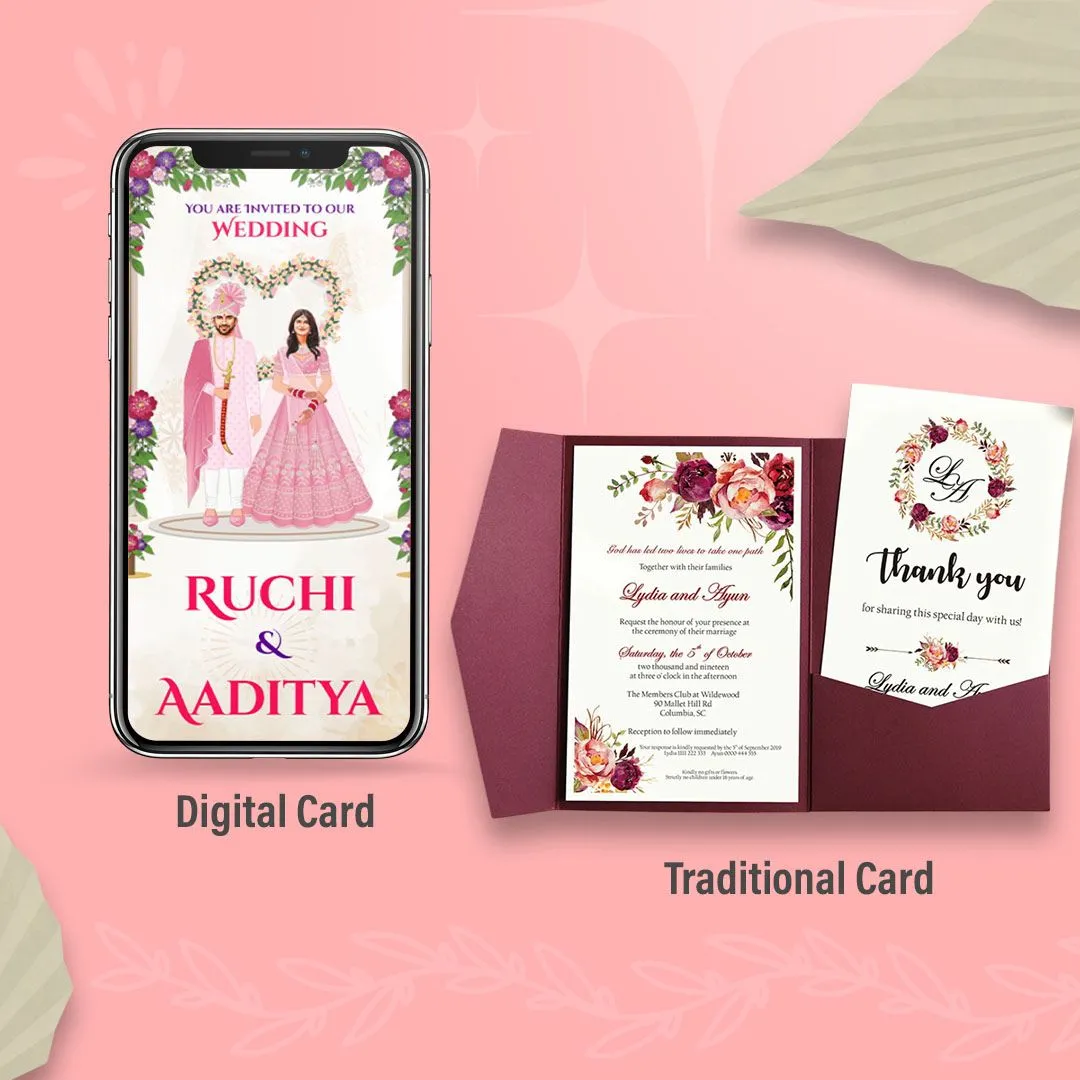Digital Invitation Cards vs Traditional Cards Which is better?

Introduction
In today's digital age, the way we communicate and celebrate events has drastically changed. This essay evaluates the effectiveness and convenience of digital invitation cards compared to traditional cards for various types of events.
1. Effectiveness in Communicatione
Digital invitation cards provide a more effective means of communication compared to traditional cards. With digital cards, event hosts can conveniently reach a larger audience and have the ability to personalize and customize the content according to the event and its attendees. Additionally, digital cards can include dynamic features such as RSVP buttons, which allow recipients to respond instantly, making event planning and coordination more efficient. On the other hand, traditional cards have limited space for information and can easily get lost or overlooked, resulting in lower response rates.
2. Convenience and Cost-effectiveness
Digital invitation cards offer unmatched convenience and cost-effectiveness. Sending digital cards eliminates the need for physical printing, postage, and manual distribution. This not only saves time and money but also reduces environmental impact. Furthermore, digital cards can be easily shared and forwarded to multiple recipients, ensuring wider reach and reducing the risk of cards getting lost or damaged in transit. Traditional cards, while nostalgic, require physical delivery and may have additional costs for postage, envelopes, and printing.

3. Versatility and Personalization
Digital invitation cards provide greater versatility and personalization options compared to traditional cards. With digital platforms, event hosts have access to various design templates, fonts, and multimedia elements, allowing for creative and visually appealing invitations. Additionally, digital cards can be easily customized to match the theme, tone, and style of the event. Traditional cards, while often considered more formal, have limited design options and are restricted to static text and imagery.When it comes to digital invitation cards, the first advantage that comes to mind is their eco-friendliness. With concerns about the environment on the rise, many people are opting for digital invitations to reduce paper waste. Not only are digital cards more environmentally sustainable, but they also offer a range of design options and customization features that can be easily shared with guests via email or social media platforms. On the other hand, traditional invitation cards have a certain charm and elegance that digital cards may lack. A physical card that can be held and admired adds a personal touch to the invitation process. Traditional cards also give guests a tangible keepsake to remember the occasion by, unlike digital cards which may get lost in a cluttered inbox. Another factor to consider is the cost. Traditional invitation cards can be expensive, especially when factoring in printing and postage fees. Digital invitation cards, on the other hand, are often more cost-effective and can be sent to a large number of recipients with just a few clicks. One of the main drawbacks of digital invitation cards is the potential for technical issues. Not everyone may be comfortable with technology, and some guests may have trouble accessing or responding to digital invites. Traditional cards, on the other hand, are straightforward and easy to understand for all age groups.
Conclusion
In conclusion, digital invitation cards offer more convenience, effectiveness in communication, cost-effectiveness, and versatility compared to traditional cards. Their ability to reach a larger audience, provide instant responses, and offer personalized designs makes them a better option for modern events. However, it is important to acknowledge the sentimental value and sense of tradition associated with traditional cards. Therefore, the choice between digital and traditional cards ultimately depends on the nature of the event and the preferences of the hosts and attendees.